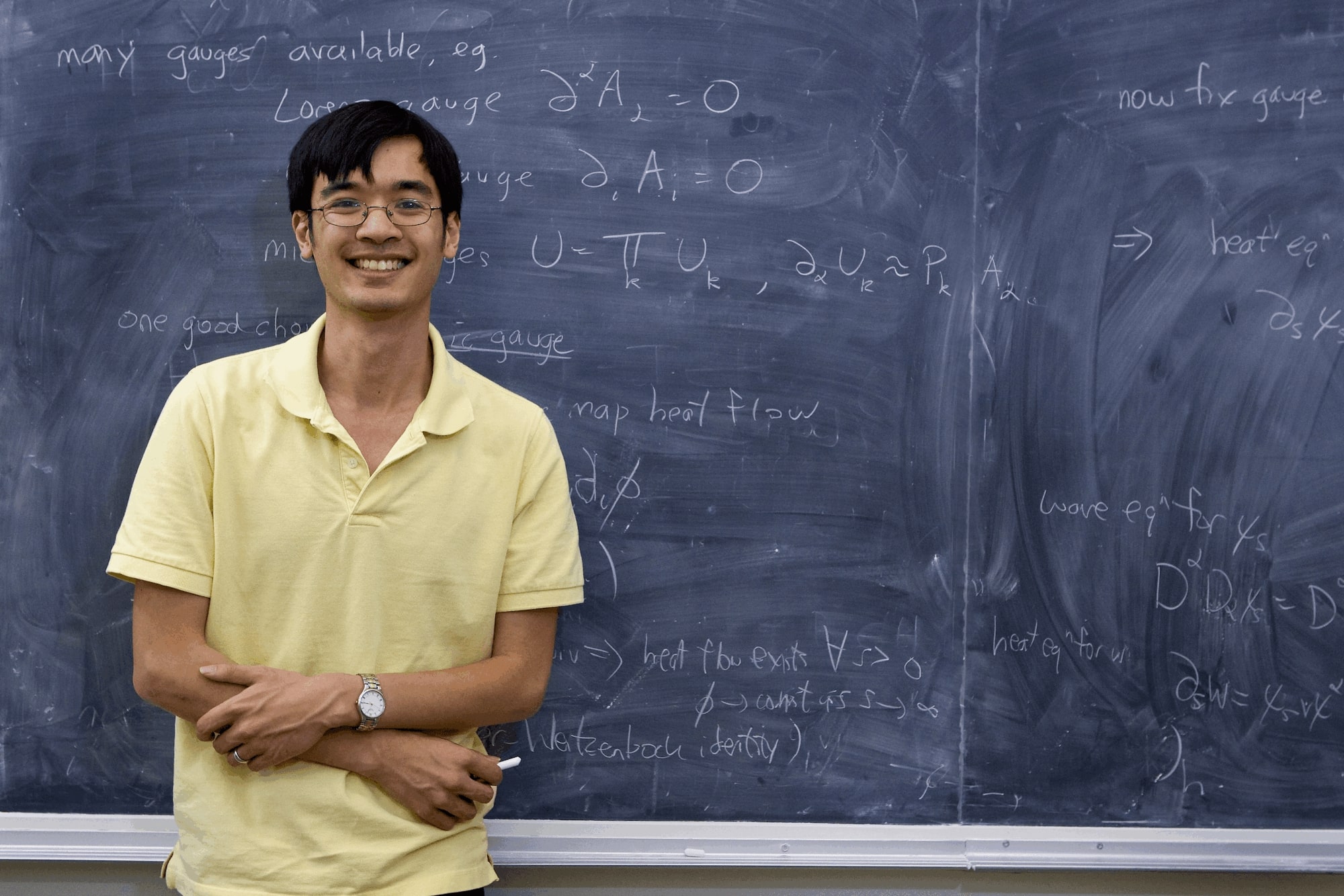MacArthur Genius and Fields Medal-winning mathematician says Fulbright provided an invigorating environment with inspirational faculty: “I very much embrace the concept of international collaboration and exchanges.”

Terence Tao, PhD, is a professor of mathematics at the University of California, Los Angeles, and the winner of a MacArthur Fellowship (commonly known as the “Genius” grant), and the Fields Medal for his “other-worldly ingenuity.” His colleagues have drawn similarities between him and Mozart, remarking that “mathematics just flows out of him.” They also called him “Mr. Fix-it” due to his uncanny problem-solving abilities. Tao is known within mathematics for his work in prime numbers, harmonic analysis, combinatorics, analytic number theory, and compressed sensing.
At the age of 13, Tao became the youngest recipient of the International Mathematical Olympiad. By 16, he had already graduated with his bachelor’s and master’s degree in mathematics from Flinders University in Australia. He was encouraged by his undergraduate mentor, mathematician and professor Dr. Garth Gaudry, to seek international education opportunities. With the encouragement of his parents and the support of a Fulbright award, he continued his graduate studies in the United States at Princeton University.
Tao admits that he was “somewhat nervous about the prospect of living abroad” given his age, but the “support of the Fulbright fellowship certainly helped ease some of the practical concerns.”
“At Princeton, I was surrounded by bright graduate students who were often more knowledgeable than me in mathematics and had a better sense of the directions of math they wanted to pursue…. Princeton was a very invigorating environment to be in for me.”
Tao completed his doctorate at Princeton. He recalls that their mathematics department was an exciting place to be at the time, especially as Professor Andrew Wiles worked on Fermat’s Last Theorem, conjectured by Pierre de Fermat in 1637. Professor Wiles finally proved the theorem in 1994—over 350 years later—to much media attention.
Since his Fulbright, Tao has helped to publicize and add a human face to the world of mathematics. He has been a professor at UCLA since 1999, and has published over three hundred articles and seventeen books, impressing colleagues with the high quality of his work, the range of subfields he has mastered, and his collegiality and openness to cooperation.
Tao has worked with over 68 co-authors, as colleagues seek him out for his insights into mathematical discoveries. He has worked extensively with British mathematician Ben J. Green, proving the Green-Tao Theorem in 2004, related to prime numbers and the twin-prime conjecture. For this work, as well as additional work on the Kakeya Phenomena, wave maps related to Einstein’s theory of relativity, and nonlinear Schroedinger equations, he was awarded the Fields Medal in 2006. The Fields Medal is the most prestigious honor for young mathematicians. It is given every four years at the International Congress of the International Mathematical Union prize and awarded to a small group of mathematicians under the age of 40.
“I very much embrace the concept of international collaboration and exchanges,” Tao reflects. “Nowadays most of my collaborators are in different institutions, perhaps over half are in different countries, and a fair fraction I have never met in person! Mathematics has, like the other sciences, become more collaborative over the years.”
Tao has always felt comfortable surrounded by other mathematicians, but he champions the “value in interacting with really wise and talented people from other fields.” His work shows how collaborations among theoretical mathematicians and other experts can solve practical challenges in medicine and engineering. He describes being contacted by colleagues who had “discovered an unusual numerical phenomenon with their experimental algorithm to reconstruct images from a very small number of measurements. When they applied their algorithm to a test image, they were getting much sharper resolution images than they had expected.” When they put the question to him, Tao “found the one scenario that could be consistent with their claims, which in fact turned out to explain the phenomenon.” Tao says that this led to a breakthrough in medical imaging that has reduced the “time needed to get a medical-quality MRI image by as much as a factor of 10!”
In addition to international and interdisciplinary collaborations, Tao sees the future of mathematics as involving “non-academic math enthusiasts, or scientists from fields that traditionally were perceived as quite non-mathematical. [My] current research interests are devoted towards developing new collaborative or AI-assisted paradigms to do mathematics in novel ways.”